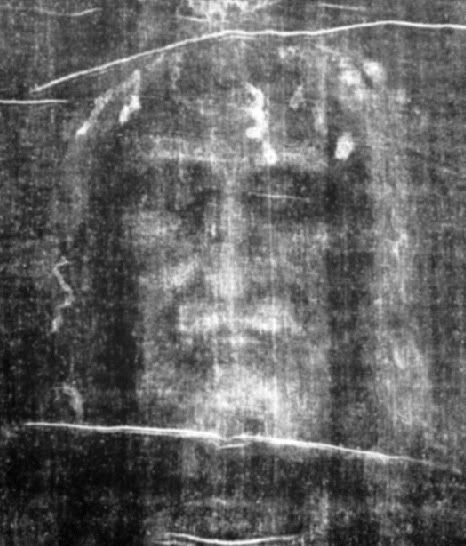| Topic: Evolution Is it Compatible With THE BIBLE? | |
|---|---|
|
The "proof" for the existence of Christ can be found in three main sources. The argument for the existence of Jesus is strengthened because the person of Jesus Christ is mentioned by independent Christian, Jewish, and Roman sources. Obviously the person of Jesus is mentioned quite thoroughly in the New Testament and other early Christian writings but Jesus is also mentioned by the Jewish historian Josephus. The fact that Josephus, a practicing Jew and a man who was not actively involved Christian circles and not part of the early church mentions the existence of Jesus of Nazareth in his writings definitely gives credence to the argument for the existence of Jesus Christ. In turn, another of the most credible arguments for the existence of Jesus Christ are the writings of the Roman historian Tacitus. Tacitus was a Roman historian who also mentioned the existence of the crucifixion of Jesus in his writings. In turn, the writings of Tacitus are viewed by historians as crucial to not only understanding early Middle Eastern history but also what we know of early Germanic tribes in Europe. The historical community is quite sure that a person named Jesus did live in the Middle East two thousand years ago and can look to independent historical sources to strengthen their argument. The reference to Jesus in Josephus was not found in early editions of his writing and have been determined to be a later addition by someone else. Same with Tacitus. The major Jewish writer of the era was Philo who does not mention him, Roman records do not mention him. Early Church Fathers defended their faith by claiming that if Pagan myths are true then theirs were as well. Period, they offered no other proof. Along the same lines it was been determined that many things in the gospels were later additions, as well as, the addition in James, of the name Jesus, when close examination demonstrates James' writing more gnostic than Xian. All that being said, i am glad you have faith in your g-d. Even th Donation of Constantine is a proven forgery. |
|
|
|
|
|
Edited by
Jeanniebean
on
Wed 02/04/09 05:22 PM
|
|
|
Josephus is very likely a pen name. I don't think he actually existed as a real person.
I have never done any research on a Roman historian named Tacitus, but if my suspicians about Josephus are true, then a Roman historian has very little credibility as he was under the control of the Roman elite who wanted to create a new religion. If he was a real person, his documentation could have easily been forged or mandated. Probably forged. These two tidbits of proof are minuscule to the amount of proof that should have been recorded had God actually walked the earth as a man and performed miracles and come back to life, and this information would have been all over the place shortly after it happened. Instead, nobody even heard about it until a couple of hundreds of years later. And the main source of this story comes from the New Testament which I think was a total fiction. |
|
|
|
|


"Then arose Peter, and ran unto the sepulchre; and stooping down, he beheld the linen clothes laid by themselves, and departed, wondering in himself at that which was come to pass." Luke 24:12 (KJV) The Shroud of Turin is a sheet of linen that bares the image of a crucified man with major wounds to the wrists, feet and top of the forehead. They have left blood stains on the cloth. The early church knew this cloth as the Sudarium. In 1898 the first photograph was taken of it, revealing a much clearer image on the negative film rather than the positive. Since 1578 it has been held in Turin Cathedral, however the cloth itself does not originate in Europe, but in the Middle East proven by the way its flax fibres are woven. Carbon 14 dating tests done in 1988 were shown to be inconclusive because they were only done on a sample that has completely different chemical properties to the rest of the Shroud because it had been rewoven. This dating technique was fundamentally flawed consequently. Further tests made the 1st Century AD a plausible date. Analysis of the blood stains Dr Baima Ballone analysed samples taken from the cloth with adhesive tape. He reported that the blood on the shroud is type AB. It is significant that type AB is rare in Europe and most of the world, with an estimated 3.2% of the world's population having this type, but around 18% of Jews from the North have it. Apart from the Y sex chromosome, all of Jesus' genetic information would have come from his mother Mary. The gene for blood type is not on the Y chromosome. On that basis, it would come from his mother Mary, and not from Joseph, sitting comfortably with the doctrine of the Virgin birth. In 1995 Dr. Gaza-Valdes of the University of Texas published the results of a DNA analysis of blood samples of the shroud in his book "The DNA of God?". Floral Evidence The British Broadcast Company (BBC) reported on the 1999 conference of the Missouri Botanical Society: "Professor Avinoam Danin of the Hebrew University of Jerusalem said an examination of pollen traces and floral imprints suggested that they could only have come from plants growing in a restricted area around Jerusalem. He said: "This combination of flowers can be found in only one region of the world. The evidence clearly points to a floral grouping from the area surrounding Jerusalem." The pollen grains were collected from the shroud some years ago. His researchers also said a type of pollen from a thistle visible near the shoulder of the man's image on the shroud was believed to have come from the plant used for Jesus's crown of thorns. Two pollen grains of this same species were also found on the another relic, the Sudarium of Oviedo, which is widely believed to have been Jesus's face cloth at his burial. That has been traced back to the 1st Century." Evidence Of 1st Century Roman Coins Enhanced photography has involved enlargements and computer analysis of shapes, colors, and shadows. A microdensitometer was used which measures very faint changes in lightness and darkness. In 1979, Jesuit Father Francis L. Filas of the Loyola University of Chicago observed on the right eyelid of the shroud image four letters "UCAI" which formed a crown around the crook of an augur’s staff. This image corresponds to the symbol on a small coin known as the dilepton lituus struck in 29 AD during the procuratorship of Pontius Pilate (26-36 AD). The coin covering the left eye was later identified by Professors Bollone and Balossino as the lepton simpulum, which also was struck in 29 AD. Jews in the 1st Century AD used coins to hold down the eyelids. Objective analysis It was concluded in the scientific Journal of Optics (April 14, 2004) of the Institute of Physics in London that the images on the Shroud are not man-made. Science does not know how the images were imprinted on the Shroud, pointing to the most glorious event in history, the resurrection of Jesus Christ being the sole cause of the images impacting the linen cloth. 1 John 3: 16 says "By this we know love, because He laid down His life for us." God's standard is perfection. Any violation of His holy laws, however small, separates us from Him. Rather than punish us, God chose to send His only Son to die one of the cruellest forms of death imagineable to give us eternal life, if we choose to give our lives to Him, and repent from our sinful lifestyle, no longer living for ourselves. I have given evidence over and over but hey...I will be happy to do so again.... |
|
|
|
|
|
He was born Joseph Ben Matthathias in Jerusalem, in 37 CE. He received the traditional education and intense religious training that was expected for a boy in a devout Jewish family, yet his life could not have taken more unexpected turns. Throughout his life, Josephus, as he was later known, assumed many roles: priest, soldier, commander, prophet, historian, and scholar. Critics, both in his time and since, have labeled him a traitor, liar, and con man. One thing is certain: He was born during interesting times, and his prolific accounts of his life and times provide us with some ...
|
|
|
|
|
|
Most theories state that the Shroud is actually of Jacques de Molay.
|
|
|
|
|
|
He was born Joseph Ben Matthathias in Jerusalem, in 37 CE. He received the traditional education and intense religious training that was expected for a boy in a devout Jewish family, yet his life could not have taken more unexpected turns. Throughout his life, Josephus, as he was later known, assumed many roles: priest, soldier, commander, prophet, historian, and scholar. Critics, both in his time and since, have labeled him a traitor, liar, and con man. One thing is certain: He was born during interesting times, and his prolific accounts of his life and times provide us with some ... Yes yes yes I know all about his alleged life. But that could have been someone else's life or two people's lives all rolled into one fictional character and given a name. There is no record of his death. |
|
|
|
|
|
Josephus (37/8-100+ CE)
Antiquities of the Jews written in 93-94 CE. ________________________________________ In some apologetics books, it is common to see a version of the Testimonium Flavianum according to William Whiston's English translation. Not to digress, but Whiston was a very brilliant man, the successor to Isaac Newton at Cambridge and popularizer of Newton's theories. Interestingly, like Locke and Newton, Whiston was an Arian (a popular thing to be in the late seventeenth century). Whiston even left the Church of England and became a Baptist so he wouldn't have to hear the Athanasian Creed. Whiston's dissertations are interesting, at the end of his Josephus volume, especially the one where he tries to prove that Joseph ben Matthias (Josephus) became an Ebionite Christian Jew, and served as the 14th bishop of Jerusalem in the succession of James the Righteous. But there really is no historical substance there. Anyway, since Thackeray (the great Josephus scholar - 1929), it has become the "majority view" in biblical scholarship that the TESTIMONIUM FLAVIANUM is either (1) a total interpolation (a view which has now practically disappeared), or (2) a partial interpolation (a view which has now become the dominant position). Based on these simple facts, I am always quite surprised when I open up low level Christian apologetics books which cite the entire Whiston reference as if it still held the sway of scholars. Here we will demonstrate the authenticity of the "reconstructed" TESTIMONIUM FLAVIANUM. Note the entire text below, with the interpolations in bold letters. "Now about this time there was a wise man named Jesus -- if indeed one ought to speak of him as a man, for he was a doer of astonishing deeds, a teacher of people who receive the truth with pleasure. And he gained a following both among many Jews and among many of Greek origin. He was the Messiah. And when Pilate, because of an accusation made by the leading men among us, condemned him the cross, those who had loved him previously did not cease to do so. For he appeared to them on the third day, living again, just as the divine prophets had spoken of these and countless other wondrous things about him. And up until this very day the tribe of the Christians, named after him, has not died out." This is the view of most higher critical scholars. It is the minority view nowadays to regard the entire TESTIMONIUM as an interpolation, based on the "criterion of embarassment" (cf. Josephus's longer and more noble mention of John the Baptist, which is discussed below). Additionally, there is sufficient evidence that this writing did not come from the pen of a Christian: FIRST, there are indications in this writing that it is an extra-Christian text. Where it says, "And he gained a following both among many Jews and among many of Greek origin." This sentence here indicates that the writer was unfamiliar with the Gospels. Nowhere in the Gospels is there any indication of Jesus gathering to himself people of Greek origin. A Canaanite woman, a Samaritan woman, and a few Gentiles who come to him. But Jesus's command to his disciples in Matt 10 is "Go not to the Gentiles . . . rather go only to the lost sheep of the house of Israel." (Although the overarching Matthean theme "is" the great commission to the Gentiles in all the earth - this was a post-resurrection narrative theme.) Thus, this indicates that "the writer" of the TESTIMONIUM was unfamiliar with the Gospels - a later Christian interpolater would have been familiar with the Gospels - yet, the "writer" is familiar with the idea that Christians are both Jews and Gentiles, something that a Jew like Josephus could surmise, and probably make an analagous inference that the immediate followers of Jesus were both Jew and Gentile, as the later Christians were in 93-94 CE. A later Christian could not have written this and blatantly contradicted the canonical Gospels. The question is "Why didn't a Christian interpolater eliminate these words or doctor them to fit the Gospel picture"? Let's be consistent in our criticism! SECOND, in Antiquities 18:5.2, there is a fairly lengthy section on John the Baptist, of whom Josephus has many lofty things to say. He even says that the Jews regarded Herod Antipas's failed military effort against Aretas (king of Petra) as a judgment from God upon Antipas because he had killed JBap. The "criterion of embarassment" leads us to regard the TESTIMONIUM FLAVIANUM as authentic (with great probability). Why would a Christian interpolater allow JBap to receive such a lengthy tribute from Josephus, while JNaz only received a few words? Like the example of JNaz's humble submission to the baptist in the Gospels, scholars regard such "embarassments" as authentic. Another important thing about the JBap reference in Antiquities 18.5.2 is that there is "no" connection whatsoever between JBap and JNaz. The two are separated by three chapters and have "nothing to do with one another" in the mind of the writer. It is inconceivable that a Christian could have written this. THIRD, if a patristic or medieval scribe was the "interpolator" of the entire TESTIMONIUM, why isn't there more of an anti-Semitic "bite" to this passage. The explanation of "Pilate" and the "leading men among us" is very bland. The Gospels, though differing somewhat in the Passion Narratives, all essentially agree that the Sanhedrin condemned JNaz for "religious" purposes, and Pilate condemned JNaz for "political" purposes." A patristic or medieval scribe with anti-Jewish sentiment (which was common) would have probably conflated the the passage to include some sort of anti-Jewish polemic. There is no anti-Jewish polemic in the TESTIMONIUM. FINALLY, the phrase "And up until this day, the tribe of Christians, named after him, has not died out." First of all, the word "tribe" (Gr. phylon) is used by Josephus in many instances, yet is "not" particularly utilized by Christians in describing themselves. Secondly, if this was penned by a Christian, there is no mention of the fact that the Christians have somehow persisted, even through the persecution of Nero. There is no "triumph" of Christianity in the tone of this passage. Stripped of the obvious Christian interpolations, there is still a nucleus to the TESTIMONIUM FLAVIANUM which is regarded as authentic by the majority of scholars. And thus, it tells us some important things about JNaz. Accordingly, Jesus was supposedly a wise teacher who also wrought some wonders (the latter claim was nothing shocking to Josephus because he himself wrote of Vespasian's miracles). Secondly, the text also tells us that Jesus got into some trouble with the religious and political authorities to the point where he was executed. A crucified rebel or leader was nothing out of the ordinary in those days, but Josephus seems a bit surprised that the "tribe of Christians," for some reason, "has not died out." Now "that" was extraordinary. Thus, we have extra-biblical support for the historical Jesus. The fact that the TESTIMONIUM wasn't used by ante-Nicene Christian apologists does not testify to it's absence from the record, it just affirms the rather neutral tone of the passage, and that it was therefore theologically useless, especially in the context of rising christological problems, etc. Tacitus (Annals 15.44) __________________________ Another important extra-biblical reference regarding the historicity of Jesus comes to us by way of the Roman statesman and historian, Cornelius Tacitus. The most unfortunate thing about "The Annals of Tacitus," which record the history of Rome between 14-68 AD, is that one of the gaps in the narrative occurs between the 29-32 AD. This doesn't mean that Tacitus recorded anything specific about JNaz or Pontius Pilate, but it would have been interesting since Tacitus showed great interest in the Tiberian period. At any rate, there are other interesting things about this quote besides the reference to a group called "Christians" whose name comes from one "Christ" -- nominus eius Christus. Before I begin to elaborate, though, let me write the entire quote from Annals 15.44 below, and remember that Tacitus is writing towards the end of his life (57/8-ca. 118), and his focus at this point in the Annals was to record the Neronian Persecution after the great fire of Rome. "Therefore, to squelch the rumor [about the fire], Nero created scapegoats and subjected to the most refined tortures those whom the common people called 'Christians,' [a group] hated for their abominabe crimes. Their name comes from Christ, who, during the reign of Tiberius, had been executed by the procurator Pontius Pilate. Suprpressed for the moment, the deadly superstition broke out again, not only in Judea, the land which originated this evil, but also in the city of Rome, where all sorts of horrendous and shameful pactices from every part of the world converge and are fervently cultivated." Now, Tacitus, writing this towards the end of his life, probably when he was proconsul of western Asia Minor ca. 112-13 AD, was writing primarily about Rome and Nero's Fire. So, this passage really has historical importance for early Christianity in Rome, and how opposition to the Imperial Cult was considered "evil," "deadly superstition," "horrendous," and "shameful." This is of tremendous importance when we consider how early Romans perceived Christians, even to the point where Nero could use them as scapegoats and the people would support his morbid persecution. As much as we have corruption in our political system here in America, we should consider ourselves lucky that we didn't live under the dominion of the great-great grandson of Augustus, the last of the Julio-Claudian line, the pupil of Seneca, and the son of Agrippina (whom he had clubbed to death) -- NERO. Anyway, Tacitus had good cause to know "something" about Christians since he governed over the Ephesian region, as did his friend Pliny the Younger who governed over Bythinia -- both indicated that they had some "remote" knowledge of the "Christian problem," and the latter some immediate knowledge of the problem. But it is very important to note that both Tacitus and Pliny, as governors in the early second century, only had a "remote" knowledge of Christianity. The visibility of "Christian Judaism" (a Roman perception) really started to become evident when "Christian Judaism" evolved into a Gentile-inclusive "cult" called "Christians." Now, allow me state some interesting things about the TACITUS reference. 1) The entire text is very negative, dismissive, and condescending towards the Christians. It simply could "not" have come from a Christian pen. Notice how Tacitus says, regarding the scapegoats, "those whom the 'common people' called Christians." This is an elitist, and perhaps aristocratic, remark because Tacitus is implying that he doesn't acknowledge them any more than he acknowledges any cult, apart from the Imperial Cult and the worship of the gods. That he doesn't acknowledge them is indicated when he says "the 'common people' [call them] Christians, [of course, I don't call them anything -- they are just another superstitious cult which I don't even recognize]. It's important to understand that this is an "elitist" perception here because "the writer" is sociologically removed from the Christians. The "Christians" do not exist in "his" world. Moreover, he speaks negatively about this superstition. He has nothing to do with it - he wants nothing to do with it. 2) But what is interesting is that (a) He assumes that "Christ" is a proper name because he makes an etymological connection with the term "Christians" - compare how Josephus simply uses the name "Jesus." (b) He has knowledge that JNaz was executed during the Tiberian reign (14-37 AD) by the procurator Pontius Pilate 26-36 AD. Now, how does he have this knowledge? Where did he get this knowledge? It isn't because he has intimate knowledge of the Christian teaching - as we said, he is sociologically removed from what he deems a cult. Therefore, this knowledge must have come to him through Roman sources, whether it was his from his friend Pliny, whether it was from his detailed study of the Tiberian reign and the problems in Judea, or whatever. I'm just saying that it's interesting how Tacitus "knows" about Jesus's execution by Pontius Pilate during the reign of Tiberius. What is his source? Some have suggested Josephus, but most scholars dismiss that idea. 3) Some skeptics can't resist in saying that Tacitus would have never used the word "procurator" as a title for Pontius Pilate because of the Caesarea Maritima insciption discovered in 1961. And it's true that the term "prefect" was more appropriate for a man of equestrian (not senatorial) rank, like Pontius Pilate. However, critical scholars have pointed out that the terms were used interchangably, especially in marginal regions like Judea. 4) Another thing is when Tacitus says that, after the execution of Jesus, "[his movement was] suppressed for the moment . . . broke out again, not only in Judea, the land which originated this evil, but also in the city of Rome. This is a loaded statement. Essentially, the phrase indicates that (a) this "Christ" character had some kind of noxious movement in Judea "prior" to his execution (presumably the execution is what temporarily suppressed the movement), but (2) the movement "somehow" broke out "again," and (3) the movement was now polluting Rome. Interestingly, this seems to be quite congruent with the general story of the Gospels and Acts. There seems to be a consistent general parallel between the two - the extra-biblical reference parallels the biblical story in general terms. Without having to go further in quoting extra-biblical sources, the Josephus and Tacitus references are sufficient to demonstrate the historicity of Jesus (at least during the period of Pilate - 26-36 AD). So, what are the scholarly conclusions simply from the TESTIMONIUM FLAVIANUM and TACTITUS references? "Now about this time there was a wise man named Jesus -- if indeed one ought to speak of him as a man, for he was a doer of astonishing deeds, a teacher of people who receive the truth with pleasure. And he gained a following both among many Jews and among many of Greek origin. He was the Messiah. And when Pilate, because of an accusation made by the leading men among us, condemned him the cross, those who had loved him previously did not cease to do so. For he appeared to them on the third day, living again, just as the divine prophets had spoken of these and countless other wondrous things about him. And up until this very day the tribe of the Christians, named after him, has not died out." (Josephus -- ca. 93-94) "Therefore, to squelch the rumor [about the fire], Nero created scapegoats and subjected to the most refined tortures those whom the common people called 'Christians,' [a group] hated for their abominable crimes. Their name comes from Christ, who, during the reign of Tiberius, had been executed by the procurator Pontius Pilate. Suppressed for the moment, the deadly superstition broke out again, not only in Judea, the land which originated this evil, but also in the city of Rome, where all sorts of horrendous and shameful pactices from every part of the world converge and are fervently cultivated." (Tacitus -- ca. 112) Thus we have the core facts of the Essential Jesus just from two extra-biblical sources: The Essential Jesus 1) A wise man and teacher with a devout following 2) It was said that he had performed astonishing deeds 3) The religious leaders accused him of something 4) Pilate condemned him to the cross and executed 5) His following seemed to disappear for a short time 6) But his following was somehow revived again 7) His followers flourished in Judea, where he was executed 8) His followers spread the movement even to Rome 9) His followers called him Christ (Gr. "annointed") |
|
|
|
|
|
The ya go evidence after evidence after evidence...And again I could go on and on.....Now you have scientific proof..and proof from others who obviously were not Christians.
|
|
|
|
|
|
the bible and evolution are totally oppisites
i beleive in GOD and some think they came from a rock. there is and absolutly no proof of evolution,no matter how hard you want to beleive or pretend there is. how come in all the books you read they generally say you have to imagine and don't you any proof? |
|
|
|
|
|
Except that he was burned in a hot smokeless fire....so no way could explain the picture on the shroud. Also all would of burned of him and clothes. There would of been nothing left. Also he was not buried like Jesus with a shroud which was their custom....also with the face cloth.
He was however very involved in the crusades Jacques DeMolay insisted that his hands were not to be bound so that he could pray in his final moments and before he died he cursed both Philip and Pope Clement, summoning both of them to appear before God, the supreme judge, before the year was out. His last words were, "Let evil swiftly befall those who have wrongly condemned us - God will avenge us." Guy of Advernge is reported to have added, "I shall follow the way of my master as a martyr you have killed him. You have done and know not. God willing, on this day, I shall die in the Order like him." The chilling irony of the conclusion of this story is that Jacques DeMolay's final words did, in fact, come true. Pope Clement V died only a month later on April 20th (he is suspected of having cancer of the bowel) and Philip IV was killed while on a hunting trip on November 29th 1314. True to the claim both men did indeed die within the year of Jacques DeMolay's own death. |
|
|
|
|
|
Edited by
Jeanniebean
on
Wed 02/04/09 06:07 PM
|
|
|
Most theories state that the Shroud is actually of Jacques de Molay. I read that conclusive proof was discovered that the shroud was not Jesus. That is not to say that it was meant to be a fake, but Perhaps it is a piece of history and it could be Jacques de Molay or anyone. In any case, if the blood was AB negative, that is part of the "bloodline" of the dragon race and many secret society member carried that bloodline. |
|
|
|
|
|
Did you read what I wrote about Jacques de Molay.....sorry but couldn't of been him....
Ok well I am done for now.... |
|
|
|
|
|
Did you read what I wrote about Jacques de Molay.....sorry but couldn't of been him.... Ok well I am done for now.... Yes I did. I don't know too much about him except that he is connected with some "secret societies" that a friend of mine was deeply involved with. |
|
|
|
|


"Then arose Peter, and ran unto the sepulchre; and stooping down, he beheld the linen clothes laid by themselves, and departed, wondering in himself at that which was come to pass." Luke 24:12 (KJV) The Shroud of Turin is a sheet of linen that bares the image of a crucified man with major wounds to the wrists, feet and top of the forehead. They have left blood stains on the cloth. The early church knew this cloth as the Sudarium. In 1898 the first photograph was taken of it, revealing a much clearer image on the negative film rather than the positive. Since 1578 it has been held in Turin Cathedral, however the cloth itself does not originate in Europe, but in the Middle East proven by the way its flax fibres are woven. Carbon 14 dating tests done in 1988 were shown to be inconclusive because they were only done on a sample that has completely different chemical properties to the rest of the Shroud because it had been rewoven. This dating technique was fundamentally flawed consequently. Further tests made the 1st Century AD a plausible date. Analysis of the blood stains Dr Baima Ballone analysed samples taken from the cloth with adhesive tape. He reported that the blood on the shroud is type AB. It is significant that type AB is rare in Europe and most of the world, with an estimated 3.2% of the world's population having this type, but around 18% of Jews from the North have it. Apart from the Y sex chromosome, all of Jesus' genetic information would have come from his mother Mary. The gene for blood type is not on the Y chromosome. On that basis, it would come from his mother Mary, and not from Joseph, sitting comfortably with the doctrine of the Virgin birth. In 1995 Dr. Gaza-Valdes of the University of Texas published the results of a DNA analysis of blood samples of the shroud in his book "The DNA of God?". Floral Evidence The British Broadcast Company (BBC) reported on the 1999 conference of the Missouri Botanical Society: "Professor Avinoam Danin of the Hebrew University of Jerusalem said an examination of pollen traces and floral imprints suggested that they could only have come from plants growing in a restricted area around Jerusalem. He said: "This combination of flowers can be found in only one region of the world. The evidence clearly points to a floral grouping from the area surrounding Jerusalem." The pollen grains were collected from the shroud some years ago. His researchers also said a type of pollen from a thistle visible near the shoulder of the man's image on the shroud was believed to have come from the plant used for Jesus's crown of thorns. Two pollen grains of this same species were also found on the another relic, the Sudarium of Oviedo, which is widely believed to have been Jesus's face cloth at his burial. That has been traced back to the 1st Century." Evidence Of 1st Century Roman Coins Enhanced photography has involved enlargements and computer analysis of shapes, colors, and shadows. A microdensitometer was used which measures very faint changes in lightness and darkness. In 1979, Jesuit Father Francis L. Filas of the Loyola University of Chicago observed on the right eyelid of the shroud image four letters "UCAI" which formed a crown around the crook of an augur’s staff. This image corresponds to the symbol on a small coin known as the dilepton lituus struck in 29 AD during the procuratorship of Pontius Pilate (26-36 AD). The coin covering the left eye was later identified by Professors Bollone and Balossino as the lepton simpulum, which also was struck in 29 AD. Jews in the 1st Century AD used coins to hold down the eyelids. Objective analysis It was concluded in the scientific Journal of Optics (April 14, 2004) of the Institute of Physics in London that the images on the Shroud are not man-made. Science does not know how the images were imprinted on the Shroud, pointing to the most glorious event in history, the resurrection of Jesus Christ being the sole cause of the images impacting the linen cloth. 1 John 3: 16 says "By this we know love, because He laid down His life for us." God's standard is perfection. Any violation of His holy laws, however small, separates us from Him. Rather than punish us, God chose to send His only Son to die one of the cruellest forms of death imagineable to give us eternal life, if we choose to give our lives to Him, and repent from our sinful lifestyle, no longer living for ourselves. I have given evidence over and over but hey...I will be happy to do so again.... JESUS NO the head covering was lying by itself and all his hair was plucked out (that's what the bible says) another interesting fact is that men had short hair as was the custom of the time.Jesus went to the town and was not noticed and Peter said he would kiss the cheek of the one.if he had long hair he would have just said it's the long hair man. I DO BELEIVE JESUS IS OUR SAVOIR!! |
|
|
|
|
|
Quick-read this article:
Some people believe the Shroud of Turin is the cloth that covered Jesus Christ during His burial. There are strong biblical and scientific reasons why it may not be. We urge our readers against hastily accepting it as genuinely showing an image of the body of Jesus Christ. I will post the article if anyone is interested. Even the Catholics are not convinced. |
|
|
|
|
|
The mummified mermaid. I have seen one of these before in a curio shop in Seattle, WA. All it requires is a bunch of anatomically correct sections of carcass that have been properly preserved and a skillful taxidermist. This is not the one I saw but it was created utilizing the same procedure.
Don’t be so quick to jump to conclusions as things can easily be manufactured. 
|
|
|
|
|
|
I wondered what happened to my prom date.
|
|
|
|
|
|
As did the Jews of Jesus....so try again....and it was stated in the blood proof.....
Most theories state that the Shroud is actually of Jacques de Molay. I read that conclusive proof was discovered that the shroud was not Jesus. That is not to say that it was meant to be a fake, but Perhaps it is a piece of history and it could be Jacques de Molay or anyone. In any case, if the blood was AB negative, that is part of the "bloodline" of the dragon race and many secret society member carried that bloodline. |
|
|
|
|
|
This is the full article.
Many people believe that the famous Shroud of Turin is the cloth that covered Jesus Christ at His burial. There are serious problems with this view, even if we ignore carbon dating tests in 1988 that showed the cloth may be only 600 or 700 years old. We admit that carbon dating can give crazy results, and carbon dating results from the shroud have brought major criticisms, so this is not proof of the shroud's age. Even so, there are serious problems with the view that this shroud shows a picture of Christ. It is clear from the Bible and from Jewish burial customs that several pieces of cloth bound Christ at His burial — not one large sheet like the shroud. In John 20:5-7 we find there was a separate piece wrapped around Christ's head. Yet the Shroud of Turin depicts a face on the sheet. The size of the shroud is 14 feet 3 inches by 3 feet 7 inches (434 centimetres by 109 centimetres). But the Bible says linen strips bound Jesus, not an enormous cloth (see John 19:40). The Bible is the authoritative record of Christ's death, burial, and resurrection, and the Bible mentions nothing of a shroud. Walter C. McCrone, head of a Chicago research institute and a specialist in authenticating art objects, examined the shroud. He found a pale, gelatin-based substance speckled with particles of red ochre on fibres from the part of the cloth that supposedly showed the figure of Christ. He also found that fibers from the “wounds” had stains, not of blood, but of particles of a synthetic vermilion developed in the Middle Ages. He said the practice of painting linen with gelatin-based temperas began in the late thirteenth century and was common in the fourteenth. McCrone concluded that a fourteenth century artist had forged the shroud, and defended this view right up until he died on July 10, 2002. In the 1980s, Jesuit priest Robert A. Wild expressed surprise that the bloodstains, if they were blood, showed no trace of smearing after all the movement and transport the body would have endured. Wild also noted that the hands of the body masked the genitals. He said this couldn't be right. No matter how you arrange a body after rigor mortis, he said, the hands cannot cover the genitals unless you prop up the elbows on the body and bind the hands tightly in place. Yet this is not what the shroud's image shows. Above: In the studio of composer Igor Stravinsky's home stood a reproduction of the face from the Shroud of Turin among other icons and religious memorabilia. © Time Inc. 1959. -------------------------------------------------------------------------------- The first record of the shroud's appearance was in 1353, when Geoffrey de Charny presented it to the small local church in the French town of Lirey. Three years later, in 1356, the bishop of the region wrote to the pope, in Latin, telling of his annoyance that certain people wanted this “painted” cloth displayed as the burial cloth of Christ. The bishop added that his predecessor, Henry of Poitiers, “after diligent inquiry and examination,” had found the artist who painted it. The artist testified that “it was the work of human skill and not miraculously wrought.” Interestingly, this date accords with the carbon-14 tests, which dated the shroud to about the first quarter of the 1300s. It also agrees with art expert Walter McCrone's estimate of the age based on known painting styles (see 5th point above). The verses that tell of Joseph of Arimathea's wrapping Jesus in linen cloth are Matthew 27:59, Mark 15:46, Luke 23:53, and John 19:40. Look in Vine's Expository Dictionary, Strong's Exhaustive Concordance of the Bible, and the Ryrie Study Bible. They all tell us the Greek words used in Matthew, Mark, and Luke (entulisso and eneileo) mean “to roll in, wind in”, “to twist, to entwine”, “to enwrap”, “to wrap by winding tightly”. Winding, twisting and entwining imply wrappings, or strips of bandage, rather than a single shroud. But if they did mean a single sheet, then Matthew, Mark, and Luke would conflict with John 19:40, which is clearer by using the Greek word othonion, meaning “linen bandage” (Strong's concordance). If the Bible writers had meant a single linen sheet like the shroud, the word used should have been othone (a single linen cloth, a sail, or a sheet). From this, it seems that all four Gospel writers were telling us that normal long strips of linen covered Jesus. The Catholic Church itself does not accept the shroud as authentic. When we last checked, in May 2008, the Catholic Encyclopedia's article on the Shroud of Turin admitted a number of reasons to doubt its authenticity. These included: the awkward fact that many similar shrouds existed which their owners claimed showed the genuine image of Christ a pope in the 1300s issued a pronouncement that when the shroud was exhibited, the priest must “declare in a loud voice that it was not the real shroud of Christ” the admission that “no intelligible account, beyond wild conjecture, can be given of the previous history of the Shroud” before it appeared at Lirey around 1353 this shroud, like the others, “was probably painted without fraudulent intent to aid the dramatic setting” at Easter witnesses in the fifteenth and early sixteenth centuries said the image was then so vivid that the blood “seemed freshly shed.” But the blood is now dark and hardly recognizable. On the supposition that this is an authentic relic dating from aroound the year AD 30, “why should it have retained its brilliance through countless journeys and changes of climate for fifteen centuries, and then in four centuries more have become almost invisible? On the other hand if it be a fabrication of the fifteenth century this is exactly what we should expect.” Even if the Shroud of Turin proves to be 2000 years old — and it hasn't — there are strong arguments against its being Christ's burial cloth. Historical note: The Shroud of Turin has been kept since 1578 in a chapel at the Cathedral of San Giovanni Battista in Turin, Italy. |
|
|
|
|
|
Edited by
voileazur
on
Thu 02/05/09 08:08 AM
|
|
|
Is evolution compatible with the bible???
A worthwhile question about ... THAT question, could be, ... is it a worthwhile question in and of itself??? ... I mean is it a legitimate open-minded question asked in good faith, or a loaded 'trap' wit hidden agenda, disguised as a question??? A lowly 'leading-statement' with its built-in dogmatic answer???' Well, let's see. Evolution strictly belongs to the world of science, and as such, has absolutely no relation to anything religious. So never mind trying to establish some fom of compatiblity with a specific religious 'cast' (fundamentals) of a particular religion (protestantism), and their particular book of dogma, the bible. The simple answer is: '... NO COMPATIBILITY WHATSOEVER BETWEEN EVOLUTION AND THE BIBLE ...', and makes the question of this post a NON QUESTION, and a NON-DEBATE. The only interesting aspect left, with respect to this question, would be: '... Why this insistence for this non-question??? ...' and, '... what are the true motives of the people insistently asking such NON-QUESTIONS ...' Well, in another thread on these forums, 'BushyDoesBillyClub' asks: '... Evolution: is it fact? ...' As a humble contribution to the non-question of this thread, I thought I would support it with my reply to 'BushyDoesBillyClub' post. So here it is: .................................................. '... Evolution is much better than fact!!! ... IT'S A SCIENTIFIC THEORY!!! ...' In a scientific context, you can't get any more factual than 'scientific theory'. Unlike the general understanding of 'theory' in everyday life which might imply a supposition, an educated hypothesis, a well articulated guess, ... 'scientific theory' implies the rigourous demonstration and explanation of all the isolated tested facts regarding a particular scientific topic. Alone, a fact doesn't explain or 'prove' anything other than that which it demonstrates specifically. Without its 'Evolution scientific theory' context, ... the isolated 'fact' that you found a fossile, ... the isolated 'fact' that you have proven that the #2 human chromosone has fused, .... or that an archeological team has recently (10-12 years) uncovered a 'hotbed' of so-called 'missing links' transitional fossiles, mean very little other than the evidence it reveals. The 'scientific theory' rigourously ties an othewise isolated string of facts together, and allows for scientific 'proof' of much larger scale than that which the isolated 'fact' could ever claim. Somewhere in the 19th century, the scientific community realized and distinguished that they weren't in a competition with religious dogma, and didn't have to establishing irrefutable 'Scientific Laws' to compete with religious dogma; that it wasn't science role to deal in absolute answers of the divine type. Science dropped 'law', and replaced it with 'scientific theory': remaining in the question and scientific inquiry, rather than being syphoned in the domains of the absolute or dogmatic. As a contribution, here is yet another piece to the very interesting video-bibliography provided by BDBC, I invite you to visit the following link: http://www.youtube.com/watch?v=JVRsWAjvQSg&feature=related It is a Ken Miller presention at Case Western Reserve University: '... The collapse of Intelligent Design, will the next 'Monkey Trial' be in Ohio? ...? Ken Miller is a Cell Biologist and teacher at Brown Univesity. He wrote 'evolution and god', and not that it should matter, but Miller believes in god, and attends church every Sunday. This not an atheist, or mad anti-religious person, on the contrary. His presentation started with a reverend inviting the guests to join him in a prayer before Miller's presentation. As far as 'reality-checks' in this 'evolution-creationism' staightjacket jousts go, it is a formidable round-up of the most recent scientific as well as judicial (the teaching of 'creationism or I.D.' as been ruled unconstitutional by a Kansas court verdict) facts regarding this question. Miller clearly argues for the debunking of the debate, and makes every attempt to reach for reconciliation of the 'other camp' while making no compromise in distinguishing 'fact' from 'fiction' in this whole debate. .................................................. Fundamentalists are demogaguically desparate to destroy anything which doesn't fit (or isn't compatible with) their bible. For compulsive and irrational reasons that are theirs, everything EVOLUTION seems to be EVIL, and must be decimated. Ironic that a scientific theory, a testable, verifiable and overwhelmingly fact supported reality should become the victim of attacks and assaults by fundamentalist-apologetics, whose very existence is based on the delusion of being 'under attack'. Just amazing!!! Watch the 'youtube' piece http://www.youtube.com/watch?v=JVRsWAjvQSg&feature=related. Worth every minute!!! |
|
|
|
|











